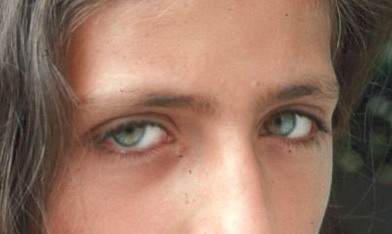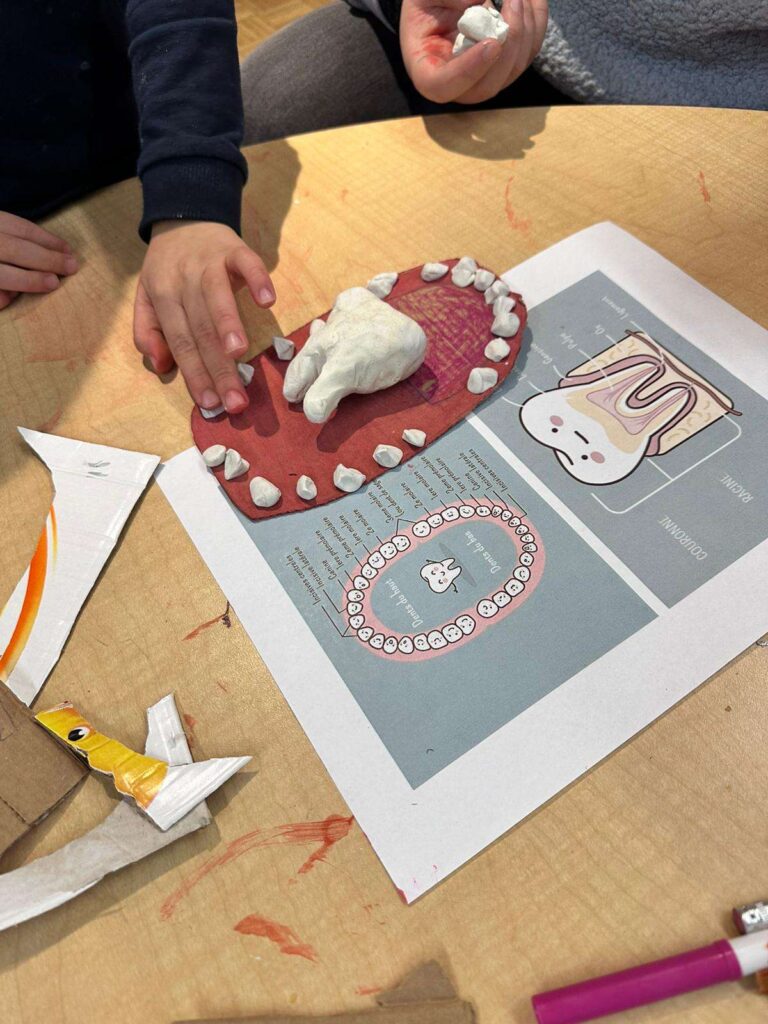In my body… a series of exciting workshops dedicated to exploring the human body, specially designed to awaken curiosity and understanding in the fascinating universe of anatomy, bodily systems, and internal functioning of the organism. During these interactive workshops, children will have the unique opportunity to explore the mysteries of human biology; from the skeleton to the teeth, and the functioning of organs, children will discover how all these systems work together to keep us healthy.

Did you notice her green eyes? Why are the descendants of Queen Victoria often haemophiliac? Who committed the crime? DNA will give us all the answers! Together, we will extract the DNA of today’s accused: a banana!

Today, let’s uncover the secrets of DNA by extracting DNA from a banana. Using materials like pipe cleaners and beads to represent the nucleic bases, let’s create a model of double helix DNA. This engaging experience will help us grasp the basics of genetics while fostering our creativity and scientific curiosity.
The heart is often considered to be one of the .most important organs in our body. Let’s explore this pump and its function
In this workshop, let’s make a stethoscope to listen to heartbeats. Explore the connection between the circulatory and respiratory systems. Understand how heartbeat rates change based on our activity and realise that they are different from one person to another and even at different stages of life. An exploration of human physiology to learn how the heart pumps blood throughout the body and how breathing ensures oxygenation of the blood.
The spinal cord is somewhat the soft pillar of our body, an alternating series of 33 bones and cartilage, it also protects our spinal cord that transmits messages between the brain and the rest of the body.
What is the spine? This series of 33 bones and cartilage discs serves as the pillar of our body, protecting the spinal cord and acting as our communication center; it transmits messages between the brain and the rest of the body. Let’s recreate a model that will allow us to appreciate the complexity and understand the importance of the spine for our anatomy and bodily function.
Teeth… we don’t have any when we are born. Over the 16-18 years, we will have 32. They all have different shapes for different fonctions. Let’s examine these!

In this workshop, children explore human dentition, from baby teeth to adult teeth, by studying the different types of teeth: incisors, canines, molars, and wisdom teeth. They also discover the anatomy of gums and their role in oral health. Using dental models and molding materials, they reconstruct a representation of the human mouth and the functions of teeth relative to their position in the mouth.
Without our muscles, we cannot move. These fibres are attached to our bones et they pull them with each contraction.
In this workshop, children explore the human muscular system by examining the various types of muscles: skeletal muscles, smooth muscles, and cardiac muscles. They will design a “muscular arm” capable of bending the forearm towards the arm around the elbow joint. They also discover the anatomy of joints and their role in body movement.
A hand is complex, delicate and necessary instrument in everyday life. Thanks to a simple and ingenious DIY, we will make a rudimentary articulated hand that will be capable of picking up objects.

One of the major differentiations between primate hands and the limbs of other mammals is the opposable thumb, providing great dexterity and adaptability in object manipulation. Let’s attempt to reconstruct a hand, including bones and tendons, to understand how they interact to enable precise movements. This interactive activity provides a fascinating insight into human anatomy and enhances understanding of the human body.
Inhale, exhale … why can some people breathe deeper than others? What happens during breathing? How do the lungs and the heart work? Two simple experiments answer these and other questions.
Breathe in, breathe out… In this workshop, we will understand how the lungs function by creating a model that simulates the expansion and compression of the lungs under the pressure of the diaphragm. Using simple materials, let’s explore the anatomy and function of vital organs while reinforcing our understanding of the respiratory system and its role in the circulatory system.
Many things keep our body standing and make it functional: bones, organs, systems… How are they organised? What are their uses? Let’s put them together and find out!

What is the longest bone in our body? And the smallest? How many bones do we have? How are they arranged in our body? Let’s assemble our bones in the body to understand their location in relation to their function. We could also add the main organs to explore the internal workings of the body and the protective role of bones in relation to certain organs.
Optical illusion? Magic? Sciences? It’s a bit of all that! A thaumatrope teaches us about something called retinal persistence, which causes our eyes to mislead our brain into seeing something that isn’t!

Let’s delve into the fascinating world of optical illusions, magic, and science by creating thaumatropes! These optical toys offer an intriguing experience where illusion meets reality. By exploring how our eyes can sometimes deceive us, we discover that we don’t always see reality as it is, but rather as our brain interprets it. It’s a captivating exploration of visual perception and how we interact with the world around us.